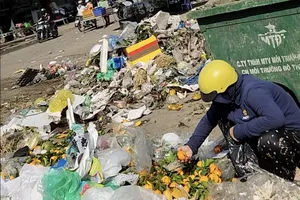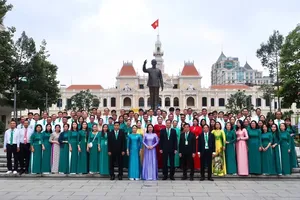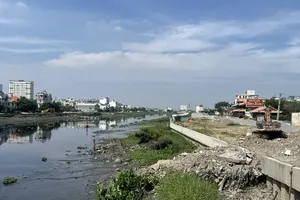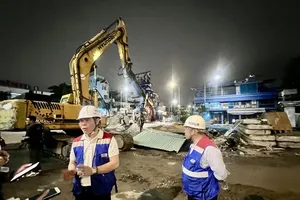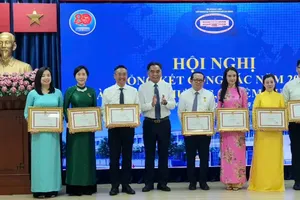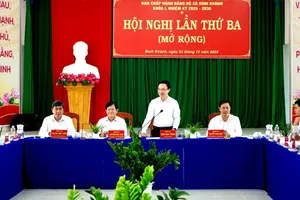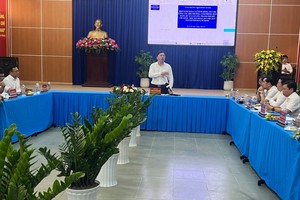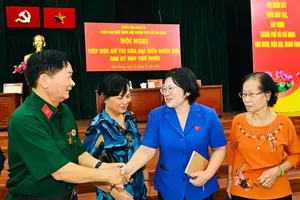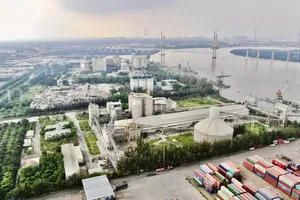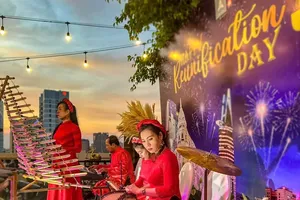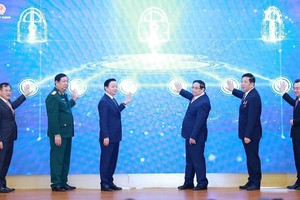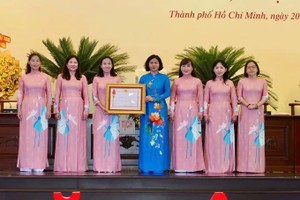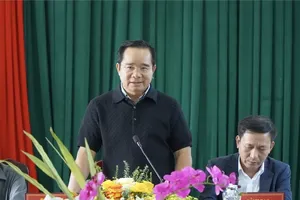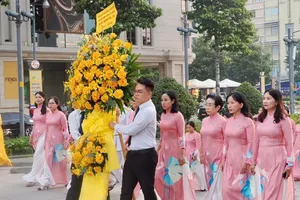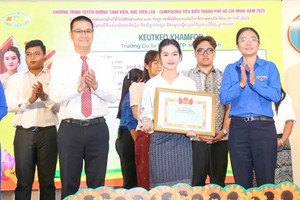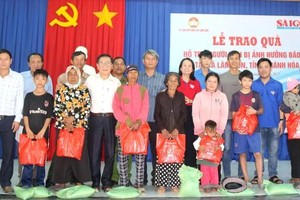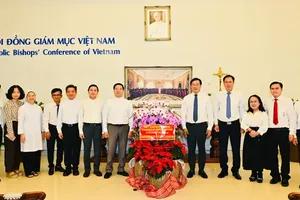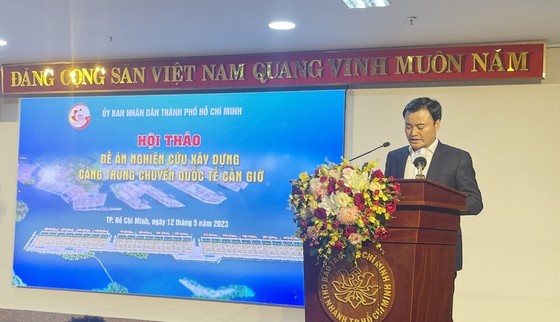 |
Mr. Bui Xuan Cuong, Vice Chairman of the HCMC People's Committee, speaks at the meeting. |
On the afternoon of May 12, the HCMC People's Committee held a seminar to gather opinions from experts, scientists, professional associations, ministries, departments, provinces, and cities in the Southeast region regarding the research and construction of the Can Gio International Transshipment Port project. The seminar was presided over by Mr. Bui Xuan Cuong, Vice Chairman of the HCMC People's Committee.
At the workshop, Mr. Bui Xuan Cuong stated that the city's seaport has been invested in and constructed to meet modern and new technology standards, and its efficient exploitation has greatly contributed to the socio-economic development of both the city and the entire Southern region. Can Gio District has a geographical position adjacent to the East Sea, located between two major rivers, the Soai Rap River and the Long Tau River, and adjacent to the Thi Vai River. These are important maritime routes of Group 4 seaports, which have all the conditions to develop the Can Gio International Transshipment Port as a national gateway and international transshipment port.
Vice Chairman of HCMC People's Committee, Bui Xuan Cuong, proposed that the workshop focus on discussing and assessing the potential, needs, development trends, and exploitation of deep-water and international seaports in the city, in line with the current seaport planning and the national plan. Experts should also propose investment models to develop successful deep-water and international ports worldwide, as well as identify difficulties and challenges. The research outcomes can be applied to the development of the Can Gio International Transshipment Port.
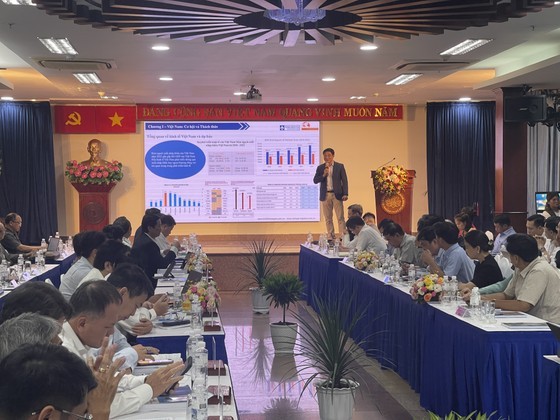 |
At the seminar |
The delegates presented various proposals, trends, and necessary adjustments for the overall planning of HCMC and the general plan of Can Gio District, emphasizing the importance of modernity, sustainability, environmental protection, and a long-term vision until 2060 while adhering to legal regulations.
Mr. Pham Anh Tuan, CEO of Portcoast Consultant Corporation, presented the project, which is expected to have a scale of about 7.2 kilometers of berth and be able to accommodate the world's largest container ships with a capacity of 24,000 TEUs. The total estimated investment for the project is around US$6 billion.
The project consists of seven investment phases, with phase 1 expected to begin in 2024 and be operational by 2027. By 2030, the project is expected to have a total cargo throughput capacity of 4.8 million TEUs, gradually increasing to 16.9 million TEUs when the project operates at full capacity (expected in 2047). The port will be able to accommodate mother ships up to 250,000 DWT, feeder vessels ranging from 10,000 to 65,000 DWT, and barges up to 8,000 tons.
The project is situated within the Can Gio Mangrove Biosphere Reserve's buffer zone on two distinct and isolated islands separated from the mainland by the Theu River, which has an average width of 1km. Moreover, the two islands have neither human habitation nor farming activities and are adjacent to the Vung Tau-Thi Vai shipping lane.
Basically, the area has had maritime activities for decades and is an isolated island. The project is a container port, built according to green port criteria, so its impact on the environment is minimal.
 |
The location of the project |
The project also eliminates the need for investment in road infrastructure connections, as it primarily relies on sea transport. Elevated roads will be proposed after 2030 to minimize environmental impact. The international transshipment port will play a significant role in promoting the formation of the HCMC financial center.
According to Dr. Tran Du Lich, a member of the National Financial and Monetary Policy Advisory Council, a leading global shipping company has chosen a location and made calculations for the project, and HCMC also has the same idea. The project has already received approval from the government and Politburo, and upon completion, the transshipment port will be integrated with the Cai Mep - Thi Vai port cluster to establish a shared port system for the entire Southeast region. It is imperative that the project is expedited to facilitate Can Gio's transformation into a coastal city, thereby driving economic growth in the Southeastern region.
